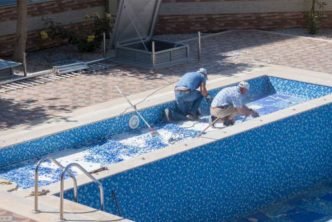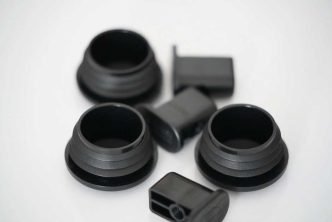Molybdenum disulfide (MoS2) is a slivery-black solid and occurs as a mineral ore Molybdenite and Jordisite. It has a layered-lattice crystal structure, which gives it lubricating properties. It is classified as a Transition Metal Dichalcogenide (TMD) inorganic material.
A single layer of MoS2 consists of two hexagonal planes of S atoms separated by a layer of Mo atoms oriented as S-Mo-S. The bonds within the layer are strong covalent bonds and the bonding between the layers is of weak Van der Waals forces.
The layers can slide against each other when a shear force is applied, leading to a low coefficient of friction. The minimum coefficient of friction occurs when the layers are parallel to the sliding surface and the maximum when the layers are perpendicular to the surface. It can support relatively high loads perpendicular to the layers.
MoS2 has excellent thermal stability, a high melting point and high wear resistance. It can offer effective lubrication up to a temperature of 350 °C in oxidising environments and up to 1100 °C in non-oxidising environments. It can be used in vacuum environments in a temperature range of -185 °C to 1100 °C. MoS2 can work effectively under humid and high-load conditions.
MoS2 is used as a dry lubricant to reduce the friction and wear between moving surfaces. It can be used as sputtered coatings, burnished films, resin bonded coatings and in powder form. In the market, it is also available as a dry Moly spray, which can be used to lubricate door hinges, window latches, chains, cutting tools and more.
MoS2 can be used in harsh environments like extreme temperatures, ultra-high vacuum, fretting wear, corrosive gases and radiation exposure. It can be used in aerospace applications as it can withstand high temperatures and high vacuum conditions without oxidising or becoming volatile.
Dry lubricants have become a preferred alternative for lubricating effectively in challenging environments without the need for frequent replenishment. They are used in weight-conscious applications as they are lighter than liquid lubricants. However, to work effectively, dry lubricants should have low shear strength, good adherence to the substrate material and thermodynamic stability in the operating temperature range. The lubricants must be softer than the surface they lubricate to offer low abrasivity. They should be non-toxic and economical.
MoS2 is an effective dry lubricant and its low surface energy helps to reduce the sliding motion resistance. It can be used in cryogenic and high-temperature applications and is non-toxic. It is chemically inert and can be used in reactive chemical environments. It is used in aerospace, automotive and food industry applications.
Different ways to produce MoS2 films
MoS2 film can be produced using the floatation method, where the MoS2 powder is floated on the surface of a liquid. The MoS2 powder is lifted off onto the surface of a flat metal plate. The liquid is removed by drying and draining. A weakly adherent MoS2 film is formed on the metal surface. This method is widely used for research purposes.
MoS2 films can be produced by using the dispersion of MoS2 powder in a volatile liquid. The dispersion can be applied to a surface by dipping, brushing or spraying. The liquid is then allowed to evaporate with additional heating or at room temperature. This method can be used to produce soft and randomly oriented films.
MoS2 films with strong adherence can be produced using organic or inorganic bonding agents. MoS2 powder can be mixed with the binding material in appropriate proportion and applied on the surface by dipping, brushing or spraying using suitable carriers. The surface can be cured at high temperature to allow the carriers to evaporate and reaction to take place and for the binding material to harden. This method is used for practical applications.
Use of MoS2 in space applications
In spacecraft, there are many moving mechanisms used like solar panel drive mechanisms, antenna mechanisms, attitude control mechanisms and connecting rockets and satellites mechanisms. The lifetimes of these moving parts are important factors which can impact the life of the spacecraft. Most of the failures are caused by tribological problems.
As the spacecraft operates in the space environment, there is no way to replace or replenish lubricants once the spacecraft is launched. Reliable and long-lasting lubricants are required. The lubricant must be able to withstand harsh conditions like high vacuum, microgravity, alternating operating temperatures and intense radiation.
Due to its frictional properties, MoS2 is widely used in space applications. Composite or multilayer films of MoS2 and metals are used to reduce friction and wear.





